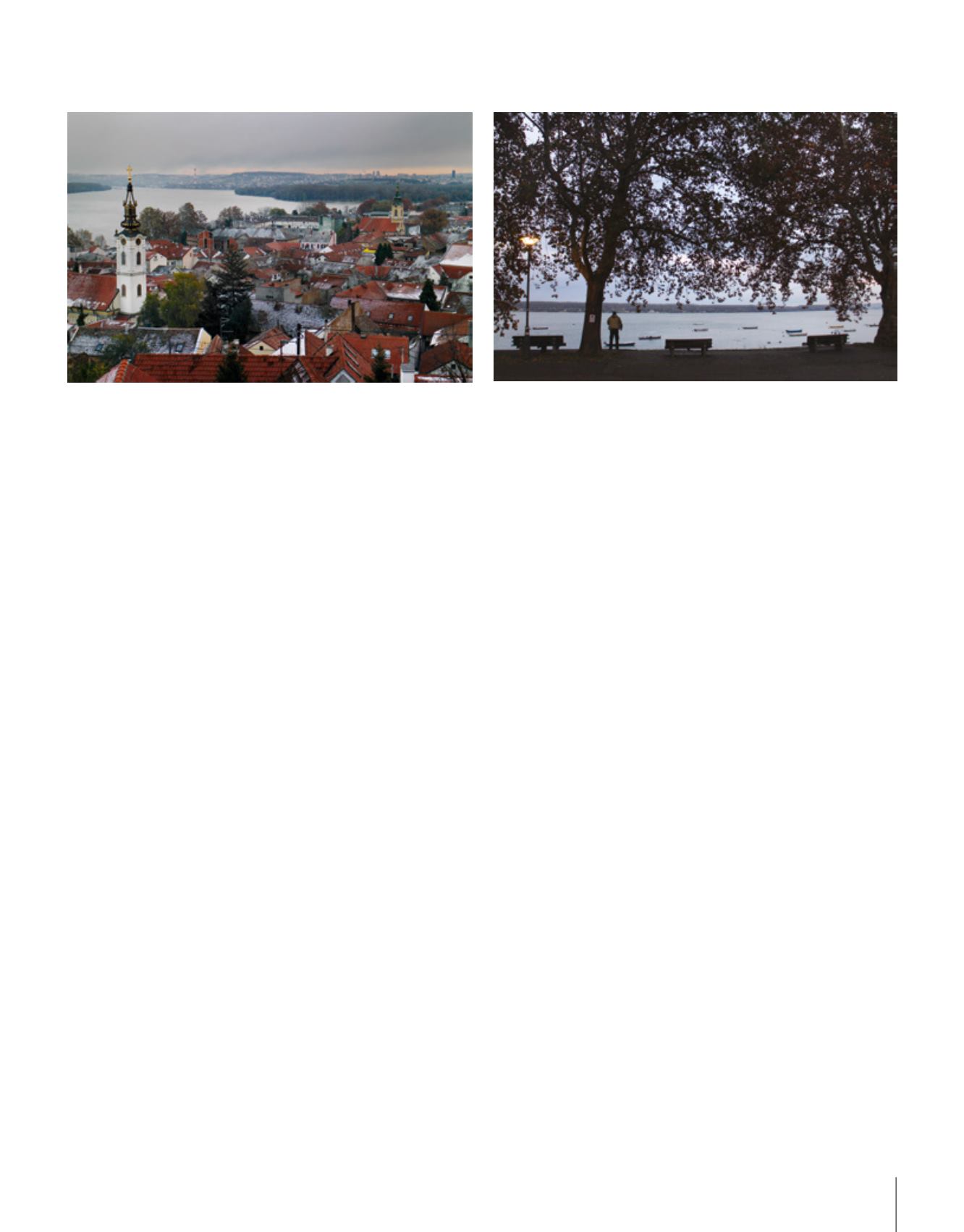
123
dönemin kapanışında şehrin
anahtarları Prens Mihailo’ya
bu kapı önünde teslim edilmiş.
Kalemeydan parkı girişinin sağ
tarafında işte bu anahtar teslim
olayını tasvir eden yatay bir
mermer anıt bulunmakta. 1713-
1716 yılları arasında, III. Ahmet
saltanatında sadrazamlık
yapmış olan Mora Fatihi Damat
Ali Paşa, 1716’da Avusturya’ya
karşı yapılan Petrovardin
Muharebesi’nde şehit
düşünce, Belgrad’a getirilip
Kalemegdan’da yapılmış
olan türbeye gömülmüş.
Malumunuz Sırp olarak doğan
Sokollu Mehmet Paşa Osmanlı
döneminde devşirme olarak
Edirne Sarayı’na getirilmiş ve
devlet adamı olarak vezirliğe
kadar yükselmiş. Belgrad’da
Sokollu Mehmed Paşa adına
günümüze kadar ulaşmış tek
eser Kalemeydan Parkı içinde
bulunan çeşme. 16. yy’ın ikinci
yarısında kendisi tarafından
yaptırılan bu çeşme aynı
zamanda Osmanlı dönemine
dair nadir örneklerden biri.
Bitmedi. Kalemegdan’da
bulunan Pobendik yani
Victor Heykeli, bir başka
deyişle Sırbistan zafer anıtı
da, görüntüsüyle olmasa
da tahmin edebileceğiniz
üzere hikayesiyle Türklerden
izler taşıyor. Sırpların Birinci
Balkan Savaşı’nda Osmanlı
İmparatorluğu’na karşı
kazandıkları zaferin anısına,
1928’de dikilmiş. Victor Anıtı
Yugoslavya Krallığı’nın en
büyük heykeltıraşı olarak
kabul gören Ivan Meštrović
tarafından yapılmış. 14 metre
yüksekliğindeki, kaidesi taştan
yapılan heykel elinde güvercin
olan çıplak bir adam. Aslında
belediye anıtı zamanında
şehir merkezi olan Terazije
Meydanı’na koymak istemiş.
Ancak heykel çıplak olunca
Belgradlılar durumu biraz
yadırgamışlar. Bu yüzden
heykel şehrin gözlerden uzak
bir noktası olan Kalemeydan
Parkı’na yerleştirilmiş. İroni
bu ya zamanında şehir
merkezinde istenmeyen
Victor Anıtı Belgrad şehrinin
sembollerinden birisi haline
gelmiş durumda. Victor
heykelinin bulunduğu köşeden
Tuna nehri tarafına doğru
uzanan geniş teras ise aşık
nehirlerin vuslat noktasında
yeni şehrin köprülerle birlikte
panoramik görüntüsünü
ayaklar altına seriyor. “Mutlaka
yapılacaklar” listemize
ekliyoruz sevgili okur.
Bayraklı Cami ise
Kalemegdan’ın yukarı çıkışına
yakın bir noktada bulunuyor.
Hemen ilerisinde ise Strahinjica
Caddesi ve bir diğer trafiğe
kapalı alan Skadarlija. Tarihi
turistik yerleri gezmeye ara
vermek isteyenler için ideal bir
bölge. Strahinjića Bana için,
cadde boyunca dağılan kafeler,
restoranlar, barlar, gezmelere
to the White House, National
Parliament Buildign (Nardona
Skupstina) will meet you. And
just a couple of steps ahead the
Parliament, the famed Tasmajdan
(Square of stone)and St. Marc’s
church. With its terracotta
structure that attracts attention
with its architecture as well, was
damaged during the world wars
and was renovated to its current
state. Ok the Tasmajdan is nice
but the reason I directed you here
is different. Our next stop, the
Nikola Tesla Museum. Ypu cannot
leave Belgrade without paying
your respects to this valuable
inventor in human history.
This inventor, who probably single
handedly contributed to today’s
technology more than anyone,
who has many “used/unused”
experiments and inventions that
could fundamentally change
the scientific and technological
outlook of the world, being
of Serbian origin, wanted his
museum to be in Belgrade. The
ones who have yet to hear about
him or who thinks only the name
rings a bell, I strongly urge you
to google this genius with more
than 700 patented inventions. He
is the mastermind who brought
electricity right into our homes
by finding alternating current,
who actually found a way to
transmit electricity without using
cables (but was hindered by
electric companies and Edison
on account of not being able
to bill it), who invented radio,
electron microscope, microwave
oven, radar, remote control
system, florescent light, set the
foundations for MR Imaging;
who could control magnetism,
predicted television and internet,
even suggested the wireless
theorem that covered the
world through the ionosphere,
who spent all his earnings to
scientific studies and died as a
poor man in a hotel room. This
museum built for him explains
his inventions and life. The
guide at the museum gives
information on the inventions
and interactively performs some
of the experiments. There is of
course a presentation on his life.
Turning on the high frequency
oscillator during the tour and the
unconnected naked florescent
tubes shining is the highlight of
the show.
The next stop after the museum
is our last stop at this direction,
another landmark of Belgrade,
the largest Orthodox Church in
the Balkans, Hram Svetog Save
(St. Sava Cathedral). Is built on
the place where Sinan Pasha
supposedly buried the founder
of the Serbian Orthodox Church,
Saint Sava, in 1595. Thogh this
idea for a church is 100 years, it
was completed in1989. Between
you and me, ıt kind of looks like
a church, from a distance. It
is not a Hagia Sophia, but still
worth seeing. A little far from the
Cathedral, in close proximity are
the stadiums for Partisan and
Red Star teams so if you your
order for uniforms, they have
official stores here. To all you
football lovers out there.
We are in an European city but
we have yet to talk about the
subway system, right? Because
there is none. The forerunners of
public transportation in Belgrade


